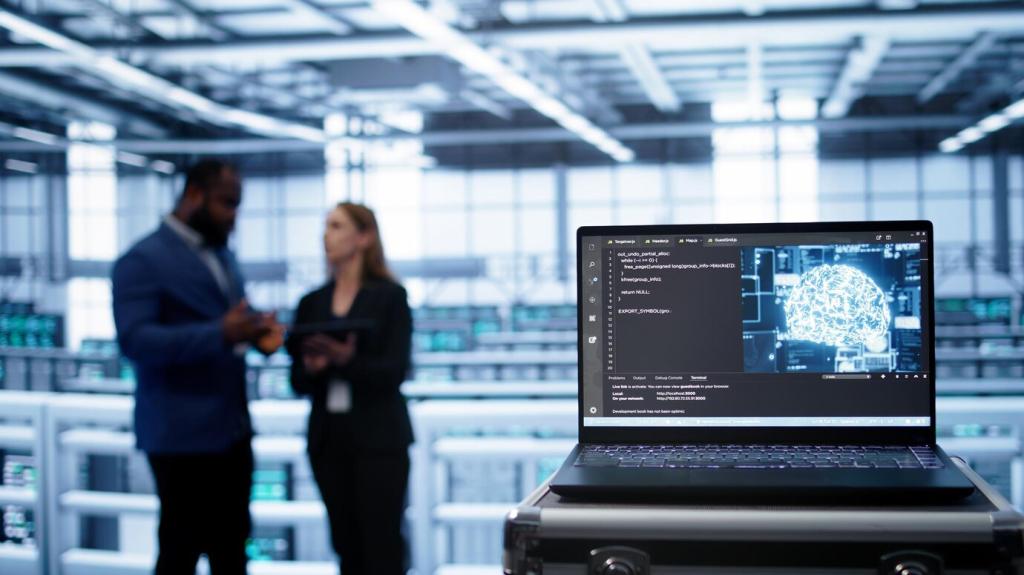AI’s Influence on Smart Home Connectivity
The rapid evolution of artificial intelligence has fundamentally transformed the landscape of smart homes by elevating the connectivity, intelligence, and adaptability of household devices. As AI-driven solutions infiltrate modern homes, they usher in a new era of seamless automation, heightened convenience, and data-driven personalization. This profound influence not only simplifies everyday life but also weaves a fabric of interconnected devices that proactively respond to the unique needs and habits of their users. Through smarter integration, enhanced security, and more efficient resource management, AI is set to redefine what it means to live in a connected home environment.

The Evolution of Smart Home Integration
Universal Device Communication
AI enables devices from different manufacturers and with distinct communication standards to work harmoniously within a single smart home ecosystem. By leveraging AI-powered protocols and algorithms, systems can interpret and translate different data formats, allowing devices to cooperate seamlessly. This universal communication ensures a smoother integration process, where the complexities of device compatibility recede into the background. Residents can thus adopt new technologies without concern for interoperability, enabling the continuous expansion and enhancement of their smart homes. The role of AI in mediating these digital conversations is pivotal in creating an ecosystem that feels genuinely smart and responsive.
Adaptive Home Environments
One of the most significant contributions of AI to smart home integration is the creation of adaptive environments that evolve with user behavior. AI learns from patterns of daily activity, such as preferred lighting settings, temperature adjustments, and music preferences, to automatically tailor the home environment accordingly. This adaptability goes beyond fixed schedules, enabling the smart home to anticipate needs and deliver personalized comfort without constant manual input. As systems continue to learn and refine their operations, the home grows smarter, more intuitive, and inherently more supportive of individual lifestyles. This transformation redefines the concept of home as a truly responsive living space.
Centralized Control Systems
AI-driven centralized control systems unify the management of multiple devices and services within the smart home, putting comprehensive control and oversight in the hands of the user. Unlike traditional remote controls or fragmented applications, these systems analyze contextual information to prioritize commands and orchestrate complex routines. Through natural language processing and machine learning, they can interpret voice commands or even proactively suggest actions based on context. This centralized approach streamlines user interactions, reduces technological friction, and sets the stage for homes where convenience and control are synonymous. The result is an ecosystem where the complexity of multiple devices vanishes behind a single, intelligent interface.
Enhancing Security Through Intelligent Agents
Advanced Surveillance and Threat Detection
Traditional security cameras have evolved into sophisticated AI-enabled platforms capable of distinguishing between routine activity and potential security breaches. Machine learning algorithms continuously monitor video feeds and analyze behavior patterns, recognizing subtle signs that might indicate intrusions or emergencies. These systems alert homeowners or law enforcement promptly while minimizing false alarms, as they can discern between a delivery person, a family member, or an unfamiliar face. By incorporating facial recognition and anomaly detection, AI-driven surveillance provides not just monitoring but actionable intelligence, transforming the home into a vigilant guardian that never sleeps.
Proactive Cybersecurity Measures
In the connected home environment, each device represents a potential entry point for cyber threats. AI strengthens digital defenses by monitoring network traffic, identifying abnormal access patterns, and responding to suspicious activity in real time. Unlike reactive security measures, AI anticipates and foils attempted breaches before they escalate, adapting rapidly to newly discovered vulnerabilities. Its capacity for continuous learning allows it to stay ahead of evolving tactics deployed by hackers. Thus, AI integrates a dynamic layer of cybersecurity that protects the privacy and integrity of the household, making smart home adoption a safer proposition for families.
Contextual Authentication and Access Control
AI refines access control by implementing contextual authentication techniques that assess a user’s identity based on multiple factors, such as voice patterns, behavioral biometrics, and usage history. Instead of relying solely on passwords or PIN codes, smart homes use AI to determine if an interaction is legitimate, granting or denying access accordingly. This nuanced approach drastically reduces the likelihood of unauthorized access, as the system recognizes anomalies in usage or the presence of unauthorized users. By tailoring access privileges in real time, AI enables homes to be both secure and convenient, minimizing risk while ensuring seamless entry for trusted individuals.


Personalization and User Experience
Modern voice assistants, driven by cutting-edge AI algorithms, move far beyond scripted responses or basic device control. They engage in meaningful dialogues, interpret nuanced commands, and learn from user interactions to become ever more effective at fulfilling requests. By understanding context, user intent, and habitual phrases, AI-powered assistants can suggest daily routines, initiate reminders, or even offer recommendations tailored to past behaviors. As these systems become increasingly sophisticated, their presence becomes an invisible but essential aspect of daily living, effectively bridging the gap between human desire and automated action in the home.
